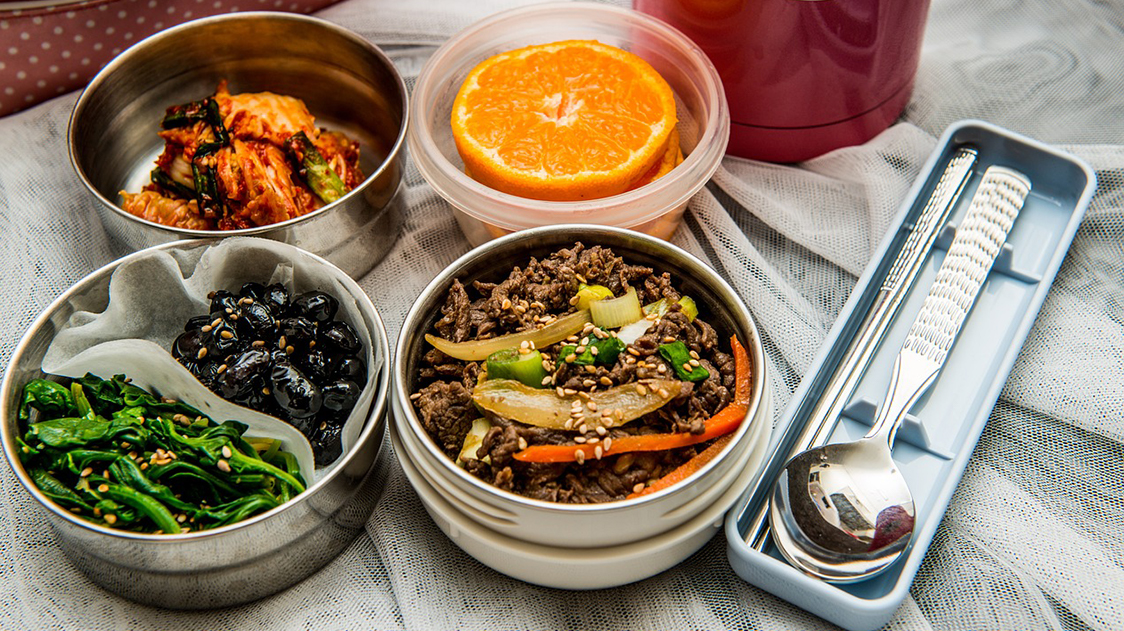How to eat healthy and climate-smart food as a student

Katarina Bälter, Professor of Public Health Sciences at MDH, considers that what we eat has a big impact on both public health and on the planet. Here are some tips for you on how to eat healthy and climate-smart food within the frame of your student budget.
Eat more vegetarian and high-fibre food
Since the production of animal foods contributes to high carbon dioxide emissions, vegetarian food is a more climate-smart choice. Vegetable foods are also healthy and nutritious – so eating more vegetarian food promotes both your and the planet’s wellbeing!
According to the Nordic nutritional recommendations you should consume 25–35 grams of fibres and 500 grams of fruit and vegetables respectively every day. One health advantage of high-fibre food is that it has a positive effect on the blood sugar levels and intestinal flora and reduces the risk of constipation and colon cancer.
Here’s how to achieve the recommendations:
- Eat fruit and vegetables at all mealtimes.
- Choose a vegetable protein. Legumes such as beans, lentils and chickpeas are inexpensive foods that are rich in protein and fibres.
- Eat wholemeal bread, fruits, berries, root vegetables and vegetables.
- To get inspiration for eating more vegetarian food you can search for recipes on the net! There’s a whole lot there directed towards students in particular.
Avoid food waste
All the food we throw away has been produced in vain and thereby contributes to excessive emissions. If you wish to be more climate-smart you should therefore make use of all food. Reduced food waste means a profit for your finances – when you avoid throwing away food you avoid at the same time throwing away money.
Here’s how to avoid food waste:
- Use what you have at home before buying new food. If you’re cooking from a recipe you can change ingredients to ones you already have in the fridge.
- Deep-freeze leftovers and raw food that’s getting old.
- Buy deep-frozen food instead of fresh. By doing this you can make savings on your food account since deep-frozen vegetables are often cheaper than fresh ones. Have ”leftover parties”, a bit like tapas, when you eat bits kept from different leftovers.
Choose local produce
A third piece of advice is to choose Swedish produce in the first instance. On account of transporting goods, imported foodstuffs contribute to the emission of greenhouse gases and should therefore be avoided. For example it’s better if you choose Swedish fruit rather than exotic fruit. The next time you think of buying grapes from abroad you can buy apples grown in Sweden instead!
Eat fruit and vegetables according to season
You student budget will be easier to keep to when you choose seasonal vegetables instead of imported goods that have been transported by air. Fresh vegetables in season tend to be cheaper than those that aren’t. When you plan according to season you also contribute to reduced emissions of greenhouse gases, and moreover you get a natural variation in your diet, which can contribute to improved health.
Here’s how to choose fruit and vegetables according to season:
- Spring: carrots, cabbage, asparagus, onions, potatoes, rhubarb.
- Summer: Swedish fruits and berries and also vegetables such as cucumber, tomatoes, corn, peppers and lettuce.
- Autumn: Primarily different sorts of cabbage. Also Jerusalem artichokes and broccoli.
- Winter: Different sorts of cabbage, Jerusalem artichokes and apples.
- All year round: Swedish root vegetables.
Remember that you can deep freeze foodstuffs and thus have access to them even when they’re not in season!
The Swedish Society for Nature Conservation
Visit the Swedish Society for Nature Conservation's website for more information
Choose from seasonal treats